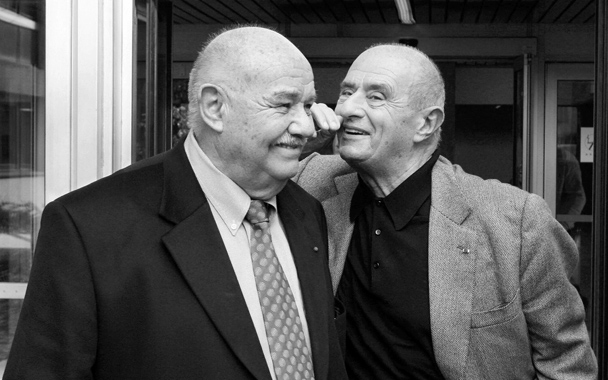Among food enthusiasts, there are certain perennial topics of conversation, culinary parlor games best played over an after-dinner drink or two: What is the best meal you’ve ever had? What would you eat for your final supper? In an article from the June 1969 issue of Holiday, French food-guide founders Henri Gault and Christian Millau take on another popular question: “Which is the World’s Greatest Restaurant?” So spirited and engaging is their response that reading it is rather like sitting between the two most voluble guests at a particularly dynamic dinner party—if that dinner party took place 40 years ago.
Gault and Millau acknowledge their nationalistic tendencies up-front and respond “tant pis” to accusations of chauvinism. They then proceed to eliminate most of the world from further consideration: The Soviet Union and China had deliberately wiped out whatever traditions they had (in fact, according to Gault, the best Chinese food is not to be found in Hong Kong or Singapore, but at San Francisco’s Imperial Palace). The Middle East (save Francophile Lebanon), Latin America, and Eastern Europe are “gastronomically under privileged.” And Africa is a total loss, except for Dakar (Senegal) and Marrakech. As for the Anglo-Saxon world, it suffers from a surfeit of pretentious and inauthentic international cuisine.
But, Gault asks, aren’t there some good, even great restaurants in London, Montreal, and New York?
Yes, Millau responds, but the chefs of these places are French.
Once safely in Europe, the pair are a little happier but still contemptuous about the food of Spain and Portugal (“ordinary and heavy”) and they disagree about Italy. Gault complains, “I don’t have a single exciting memory except for the scampi at Harry’s Bar in Venice.” Millau, however, defends at least a few restaurants: Dodici Apostoli in Verona, Sabatini in Florence, and Giannino in Milan. Danish food is always of good quality, Millau remarks, and “children like it very much,” but “obviously this is not great cuisine.” Belgium is full of honorable but not quite top restaurants. In Switzerland they cook “in the French manner, adequately, but without spark.”
With some relief the pair turn to France, discussing a good 25 restaurants, including the usual Parisian suspects (Tour d’Argent, Grand Vefour, Lucas-Carton) as well as Chez Denis, whose owner is deemed “mad” for his utter disregard for expense ($20 per person!) and his lofty indifference to his customers’ preferences (duck must be served bloody or else not at all). The final competition comes down to two restaurants near Lyon: Troisgros and Bocuse. Troisgros is regarded as more traditional, intimate, and familial, while Bocuse is praised as a master of grandeur and creativity. Ultimately, though, the contrast drawn is one of personality: The Troisgros brothers are working purely for the sake of art while Bocuse is working for fame; the former represent wisdom while the latter represents glory. Of course, innovation à la Bocuse has long been the path to celebrity status for chefs, even if subsequent generations have had to rediscover many things Gault and Millau still took for granted in 1969: farms, seasons, and local traditions.
However arrogant they were in dismissing the rest of the world and assuming the pre-eminence of France, Gault and Millau were perceptive. Nearly 40 years later, most of the French restaurants they mention—including the two finalists, Troisgros and Paul Bocuse (now L’Auberge du Pont de Collonges)—are still around. And their list, much more than a response to a banal question of ranking, remains a casual and fascinating meditation on what was prized during the twilight of French culinary authority.




 Pinterest
Pinterest


